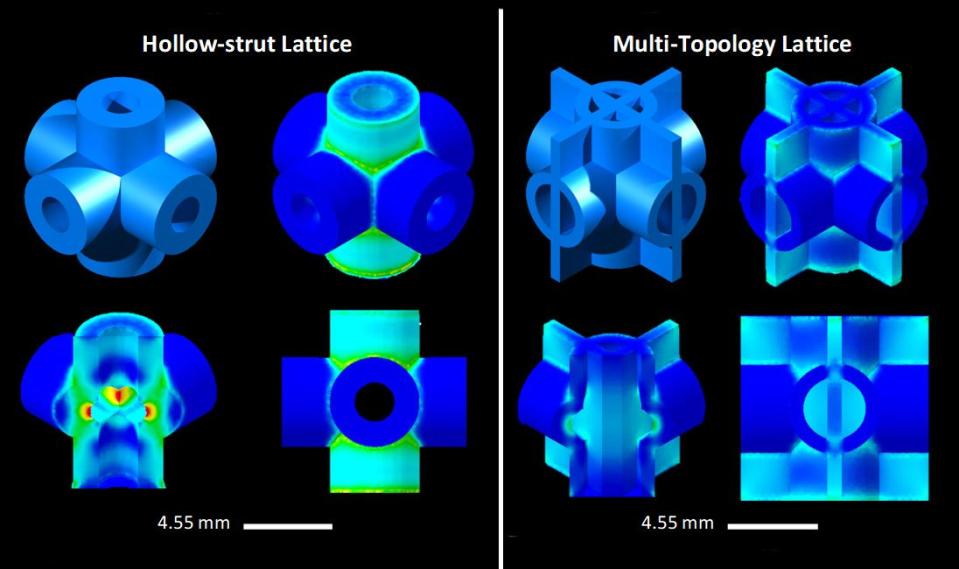A Miracle Titanium Material Could Make Cars and Buildings Impossibly Tough

Empowered by advanced metal 3D printers, scientists can now create lattice structures inspired by nature that distribute load stress across internal struts.
Researchers recently made a lattice cube out of a new metamaterial—it’s 50 percent strong than aerospace alloys of a similar density, and was developed by RMIT University in Melbourne, Australia.
While an impressive improvement, the metamaterial requires an advanced manufacturing process that means it won’t be baked into aircraft (or anything else) any time soon.
Nature is an engineer’s greatest teacher. Humans have developed surgical needles from mosquitos, LED bulbs from fireflies, and even helicopter tech from hummingbirds. To create some of the toughest aerospace materials, engineers also ripped a page from evolution’s playbook by recreating the lattice structures in hollow struts found in Victorian water lilies and hardy organ pipe coral.
However, recreating these natural structures has been an engineering headache, as limited manufacturing ability means these lattice structures don’t live up to their load-bearing potential. Luckily, the era of 3D printing now offers a level of finesse that finally allows engineers to unlock nature’s light-yet-durable secrets.
In a new paper published in the journal Advanced Materials, scientists from Royal Melbourne Institute of Technology (RMIT) University in Melbourne, Australia have created a 3D-printed metamaterial that’s 50 percent stronger than the cast magnesium alloy WE54 used in the aerospace industry (which is of a similar density). The team overcame a common problem with these hollow “cellular structures” due to stress being concentrated on certain areas of the strut, which leads to a premature failure. Instead, the scientists designed a multi-topology lattice that distributes load stress evenly to avoid load-bearing “hot spots” while also deflecting cracks along the structure.
“For most topologies, it is common for less than half of the material to mainly bear the compressive load, while the larger volume of material is structurally insignificant,” RMIT University professor and study co-author Ma Qian said in a press statement. “We designed a hollow tubular lattice structure that has a thin band running inside it. These two elements together show strength and lightness never before seen together in nature… by effectively merging two complementary lattice structures to evenly distribute stress, we avoid the weak points where stress normally concentrates.”

The creation of this ultra-durable, multi-topology lattice is possible thanks to RMITs laser powder bed fusion (L-PBF) printer, which is much more complicated than your typical desktop 3D printer. As its name suggests, this machine uses metal powder that is melted into place using high-powered laser beams. According to a separate 2023 RMIT study, this printer “imposes few design constraints on part geometry…enabl[ing] the manufacture of complex parts that are highly customizable.”
This incredible degree of manufacturing freedom allowed the researchers to not only create the ultra-strong lattice cubes, but create them in various sizes—from several meters to only a few millimeters, broadening their potential applications in various industries. The material is also resistant to corrosion and heat, and can withstand temperatures up to 350 degrees Celsius (though scientists are confident that a threshold of 600 degrees C is possible).
While discovering this immensely strong metamaterial is step one, manufacturing such a complex object at scale is another challenge entirely. That’s primarily because, as the researchers freely admit, “not everyone has a laser powder bed fusion machine in their warehouse.”
But once they do, the wonders of nature will once again be within our grasp.
You Might Also Like

